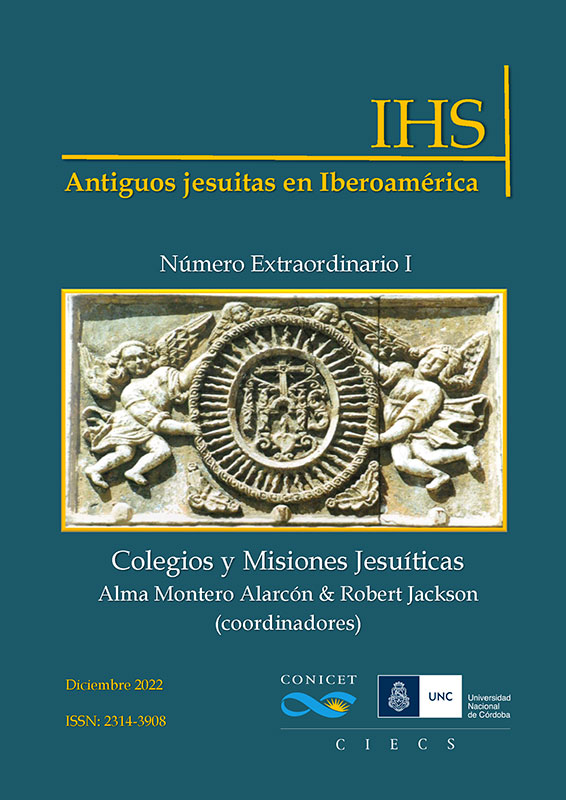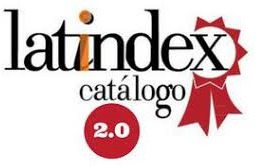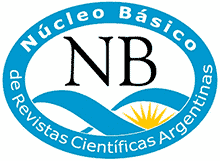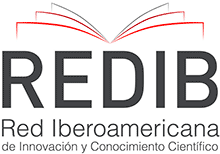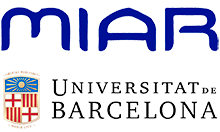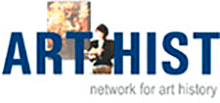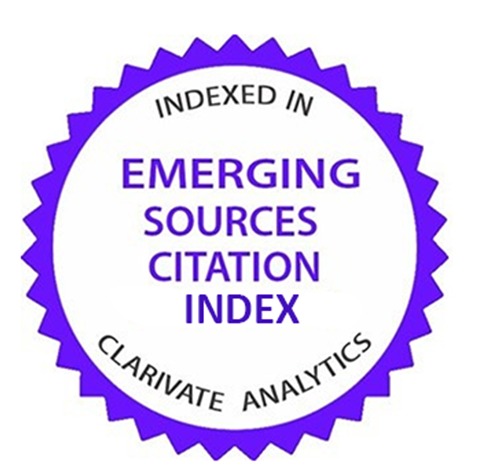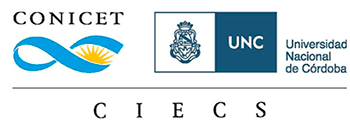Schools and production of jesuit identity
DOI:
https://doi.org/10.31057/2314.3908.v11.38621Keywords:
Jesuit Colleges, Jesuit iconography, Jesuit identity, Jesuit Spirituality, imageAbstract
Thanks to a model of prayer in the Spiritual Exercises inspired by the imagination of gospel scenes, the Society of Jesus developed a religious culture linked to the image. Its use was the way the Jesuits represented themselves, clarifying the meaning of their mission and identity. Thus, its Colleges and churches were the spaces used for a self-representation that reflects, in different parts of the world, a homogeneous four-dimensional iconographic program: a. the variety of ministries of the word, b. the global apostolic character, c. the institutional propaganda through the image of martyrdom and d. the adaptation of its members to local cultures, in a special way, together with the elites. These elements can be clearly seen in the iconographic program of the Templo del Colegio de la Transfiguración del Cusco, Perú.
Downloads
References
Alaperrine-Boyer, M. (2007). La educación de las elites indígenas en el Perú colonial. Lima, Perú: IFEA-Instituto Riva Agüero.
Barbé, J. B. (1609). Vita beati P. Ignatii Loyolae, Societatis Jesu fundatoris, Texto en latín de N. Lancicius. Roma.
Blake SJ, R. (2000). “Listen with your eyes. Interpreting images in the Spiritual Exercises”. Studies in the Spirituality of Jesuits, 31(2), pp. 1-42.
Begheyn, SJ, P. (2006). “An Unknown Illustrated Life of Ignatius of Loyola by Petrus Firens (about 1609)”. Archivum Historicum Societatis Iesu, 75(149), pp.137–157.
Blum, P. R. (2020). Iconology as a Spiritual Exercise. The compositio loci in Ignatius of Loyola. En B. Hub., y S. Kodera (Eds.), Iconology, Neoplatonism, and the Arts in the Renaissance. (pp. 183-199). Nueva York, EE. UU: Routledge.
Civil, P. (2021). “Hagiografías y cultura visual: algunos casos de hibridismo en la España del siglo XVII”. Hipogrifo. Revista de literatura y cultura del Siglo de Oro, 9(1), pp. 47-68.
De Hamel, C. (1994). A History of Illuminated manuscripts. Londres, Inglaterra: Phaidon Press
De Hamel, C. (2001). A History of the Bible. Nueva York, EE. UU: Phaidon Press Limited
Dejo SJ, J., Mujica, R. y Wuffarden, L.E. (Eds.) (2018). San Pedro de Lima. Lima, Perú: Fondo Editorial del BCP.
Dejo SJ, J. (2018a). Contemplar y simbolizar en la misión: unión con Dios e identidad jesuita en los Andes (siglos XVI y XVII). Silex, 8(2), pp. 43-71.
Dejo SJ, J. (2018b). “La misión jesuita en el Perú (S. XVI-XVIII)”. En: Dejo SJ, J; Mujica, R. y Wuffarden L. E. (Eds.), San Pedro de Lima. Lima, Perú: Fondo Editorial del BCP.
Denoël, C. y Doyle, K. (2018). Medieval Illumination: Manuscript Art in England and France 700–1200. Londres, Inglaterra: British Library Medieval Guides.
Fabre, P. A. (1992). Ignace de Loyola le lieu de l’image: le problème de la composition de lieu dans les pratiques spirituelles et artistiques jésuites de la seconde moitié du XVIe siècle. Paris, Francia: EHESS.
Fleming, A. C. (2014). “Combining & Creating a Singular Vita of Ignatius of Loyola”. En: Dressen, A. y Gramatzki, S. (Eds.), Privater Buchbesitz in der Renaissance: Bild, Schrift und Layout. kunsttexte.de, (3).
Fois SJ, M. (2001). “Aquaviva, Claudio, Quinto General”. En: O’Neill SJ, C. E. y Domínguez SJ, J.M. (Ed.). Diccionario histórico de la Compañía de Jesús: biográfico-temático (Vol. II). Madrid, España: Universidad Pontificia Comillas.
Galle, T. (1610) (ilustrador). Vita Sancti Patri Ignatii Loyolae, Religionis Societatis Iesu Fundatoris. Texto de Ribadeneira, SJ., P. Antwerp: Ioannem Gallaeum.
Hyland, S. (2003). The Jesuit and the Incas: The Extraordinary Life of Padre Blas Valera, S.J. Ann Arbor, EE. UU: University of Michigan Press.
Lécrivain, P. (2011). “Les missions de l’internationaérieur, un ministère privilégié de la Compagnie de Jésus, sous Ignace de Loyola et Claudio Aquaviva”. Studia Missionalia, 60, pp. 195-214.
McKendrick, S. y Doyle, K. (2016). The Art of the Bible: Illuminated Manuscripts from the Medieval World. Londres, Inglaterra: Thames & Hudson.
Melion, W. S. (2012a). “Parabolic Analogy and Spiritual Discernment in Jéronimo Nadal’s Adnotationes et Meditationes in Evangelia of 1595”. En: L.S. Harald Hendrix y T.M. Richardson (Eds.), The Turn of the Soul: Representations of Religious Conversion in Early Modern Art and Literature, (pp. 299–338). Leiden: Brill.
Melion, W. S. (2012b). “In sensus cadentem imaginem: Varieties of the Spiritual Image in Theodore Galle’s Life of Blessed Father Ignatius of Loyola of 1610”. En: W. de Boer y C. Göttler (Eds.), Religion and the Senses in Early Modern Europe, (pp. 63-107). Leiden: Brill.
Melquíades, A. M. (1975). Los recogidos. Nueva visión de la mística española (1500-1700). Madrid, España: Fundación Universitaria Espvañola.
Mesa, J. y Gisbert, T. (1982). Historia de la pintura cuzqueña (Vol. I). Lima, Perú: Fundación N. Wiesse.
Mujica, R. (2005).“ El ‘Niño Jesús Inca ’y los jesuitas en el Cusco virreinal”. En: López, R. (Ed.), Perú: indígena y virreinal (pp. 102-106). Barcelona y Madrid, España: Museau Nacional d’Art de Catalunya/Ministerio de Cultura.
Mujica, R. (2021). “Vergüenza de españoles”: el indio milagroso o el inca redentor del padre Altamirano, SJ”. En: Altamirano SJ, D. (Ed.), Una Crónica jesuita olvidada. Historia de la Provincia jesuita del Perú. Lima, Perú: Universidad Antonio Ruiz de Montoya (UARM).
O’Malley SJ, J. W. (1993). The First Jesuits. Cambridge, EE. UU: Harvard University Press.
O’Malley SJ, J. W. (Ed.). (2008). Constructing a Saint through Images: The 1609 Illustrated Biography of Ignatius of Loyola. Philadelphia, EE. UU: Saint Joseph’s University Press.
Orth., M. D. (2015). Renaissance Manuscripts: The Sixteenth Century (Vol. III). En: C. Heck y S. Hindman (Eds.), A Survey of Manuscripts illuminated in France. Londres, Inglaterra y Turnohut, Bélgica: Harvey Miller-Brepols.
Platovnjak, I. (2018). “The importance of imagination in ignatian spirituality”. Bogoslovska smotra, 88(4), pp. 1035-1055.
Regalado de Hurtado, L. (1996) [1993]. Sucesión Incaica. Aproximación al Mando y Poder entre los Incas a partir de la Crónica de Betanzos (2da edición). Lima, Perú: Fondo Editorial de la Pontificia Universidad Católica del Perú.
Rodríguez G. de Ceballos SJ, A. (1994). “El ciclo de la vida de San Ignacio de Loyola pintado por Cristóbal de Villalpando en Tepozotlán. Precisiones iconográficas”. Ars Longa, 5, pp. 53-60.
Salviucci, L. (2004). L' Imago primi saeculi (1640) e il significato dell'immagine allegorica nella Compagnia di Gesù: genesi e fortuna del libro. Roma, Italia: Pontificia Università Gregoriana.
San Ignacio de Loyola (1991). Obras completas. Madrid, España: Biblioteca de autores españoles.
Steeves SJ, N. (2016). Grâce à l'imagination. Intégrer l'imagination en théologie fondamentale. Paris, Francia: Éditions du Cerf, coll. « Cogitatio fidei ».
Valdivieso, E. (2000). “Una serie pictórica de la vida de San Ignacio de Loyola por Juan de Espinal”. Laboratorio de Arte. Revista del Departamento de Historia del Arte, 13, pp. 391-402.
Vargas Ugarte SJ, R. (1963). Los jesuitas del Perú y el arte. Lima, Perú: Arzobispado de Lima.
Zuidema, R. (1980). “El sistema de parentesco incaico: una nueva visión teórica”. En: Mayer, E. y Bolton, R. (Eds.), Parentesco y Matrimonio en los Andes. Lima, Perú: Fondo Editorial de la Pontificia Universidad Católica del Perú.
Zuidema, R. (1995) [1964]. El Sistema de Ceques del Cuzco. Lima, Perú: Pontificia Universidad Católica del Perú.
Downloads
Published
How to Cite
Issue
Section
License
Copyright (c) 2022 Antiguos jesuitas en Iberoamérica

This work is licensed under a Creative Commons Attribution-NonCommercial-ShareAlike 4.0 International License.
Los autores/as que publiquen en esta revista aceptan las siguientes condiciones:
- Los autores/as conservan los derechos de autor y ceden a la revista el derecho de la primera publicación, con el trabajo registrado con la licencia Atribución - NoComercial - CompartirIgual de Creative Commons que permite a terceros compartir (copiar y redistribuir el material en cualquier medio o formato) y adaptar (remezclar, transformar y construir a partir del material) bajo los siguientes términos: Atribución — se debe dar crédito de manera adecuada, brindar un enlace a la licencia, e indicar si se han realizado cambios. Puede hacerlo en cualquier forma razonable, pero no de forma tal que sugiera que usted o su uso tienen el apoyo de la licenciante. NoComercial — no se puede hacer uso del material con propósitos comerciales. CompartirIgual — si remezcla, transforma o crea a partir del material, se debe distribuir su contribución bajo la la misma licencia del original. Los autores/as pueden realizar otros acuerdos contractuales independientes y adicionales para la distribución no exclusiva de la versión del artículo publicado en esta revista (p. ej., incluirlo en un repositorio institucional o publicarlo en un libro) siempre que indiquen claramente que el trabajo se publicó por primera vez en esta revista.
- Se permite y recomienda a los autores/as a publicar su trabajo en Internet (por ejemplo en páginas institucionales o personales) antes y durante el proceso de revisión y publicación, ya que puede conducir a intercambios productivos y a una mayor y más rápida difusión del trabajo publicado (vea The Effect of Open Access).

